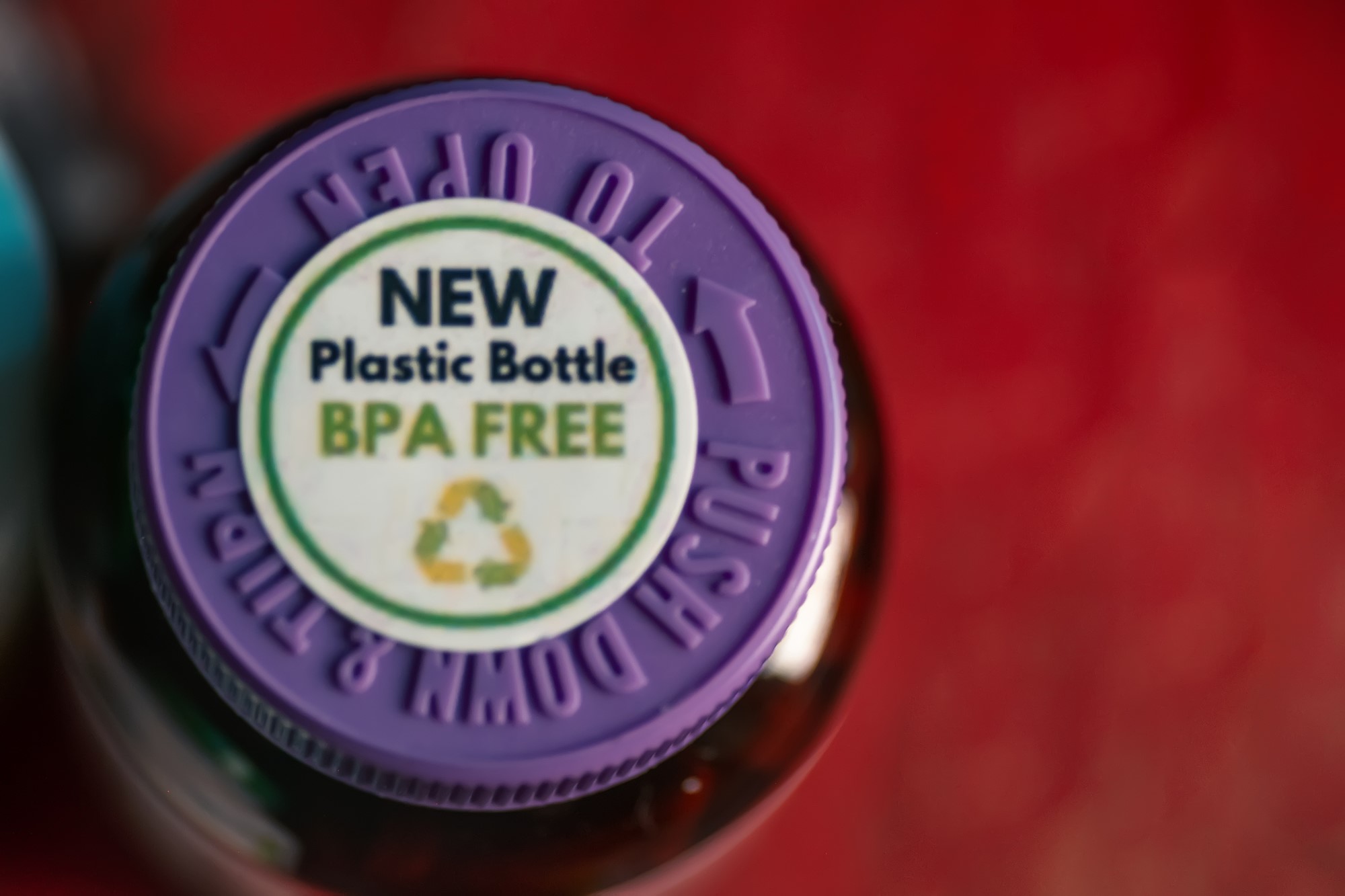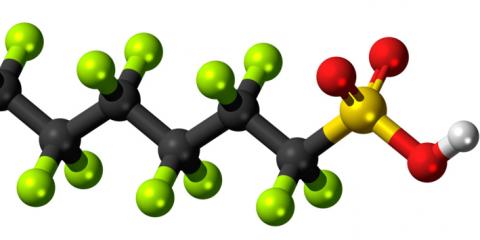What's bisphenol A?
Bisphenol A (BPA) is a chemical that has been used for several decades in the manufacture of lightweight, hard plastics such as polycarbonate and epoxy resin. It is found in everyday objects, such as protective films inside food cans or reusable plastic bottles.
How do we ingest it?
Like other chemicals, BPA can migrate in small amounts from a container into the food or drink it contains. We can also be exposed to BPA through non-food products such as toys or thermal paper (like the one often used to print supermarket checkout tickets).
"Unfortunately BPA is a ubiquitous contaminant," says Martí Nadal, a researcher at Tecnatox, a research centre at Rovira i Virgili University in Reus, where he studied the presence of BPA in baby and pregnant women's clothing and in canned food. "It seems that ingestion through food is the most important [route of exposure], but we cannot underestimate the other ones," he adds.
"One of the [contamination routes] we are most concerned about is in newborns in Neonatal Intensive Care Units, via inhalation, dermal, oral and intravenous/parenteral routes," says Marieta Fernández, a researcher at ibs.GRANADA, the biomedical research institute of the University of Granada, that has been studying BPA for decades.
How dangerous is BPA for health and the environment?
According to the European Chemicals Agency (ECHA), BPA:
- causes toxic effects on our ability to reproduce;
- causes serious eye damage;
- may cause respiratory irritation;
- may cause skin allergies;
- is very toxic to aquatic life, with long-lasting effects (this classification applies from November 2023).
BPA appears on the ECHA list of endocrine disruptors, both for human health (assessment conducted by the French government) and for the environment (German government). This means that it interferes with the action of hormones in the body. PlasticsEurope - a trade association representing the plastics industry - opposed this classification in court. In March 2023, the Court of Justice of the European Union dismissed their latest appeal, ruling in favour of ECHA, France and Germany.
For human health, "the effects that most concern us are alterations in the male and female reproductive systems, along with fertility, breast cancer, alterations in the development of the nervous system, diabetes and obesity," Ángel Nadal, Professor of Physiology at the Miguel Hernández University of Elche, tells the SMC Spain.
Are there points of controversy among researchers?
Although the associations observed between BPA exposure and effects in humans cannot prove causality, "the effects of BPA on different systems and organs are supported by a large body of experimental evidence," says Fernández.
On the link between BPA and the increased prevalence of the aforementioned diseases, "there is no controversy among most researchers," agrees Angel Nadal. However, we don't know what percentage is caused by BPA exposure in humans compared to other risk factors, explains the physiologist, "and that is difficult to study".
Nor is there controversy among most researchers that "BPA acts at low doses like those we humans have in our blood", he adds.
What restrictions are in place in the EU?
There are several restrictions at the European level. The use of BPA is allowed in food contact materials, with a Specific Migration Limit (SML) of 0.05 mg of bisphenol A per kilogram of food (Regulation (EU) 2018/213), but banned in the manufacture of polycarbonate baby bottles (EU Regulation No 321/2011).
What has EFSA said now?
On 19 April 2023, EFSA published a scientific opinion on the public health risks related to the presence of BPA in foodstuffs, an update of a similar report published in 2015. Last month's review included 800 new studies published since 2013, the cut-off point for the previous assessment. This re-evaluation was conducted by a group consisting of scientists appointed by EFSA and experts appointed by the governments of seven European countries.
This opinion recommends a Tolerable Daily Intake (TDI) for bisphenol A of 0.2 nanograms per kilogram of body mass per day. This is 20,000 times lower than the TDI recommended in the previous report (4 micrograms per kg per day), published by EFSA in 2015. In that report, EFSA considered that there was no danger to consumers' health because their exposure to BPA was below the then-recommended limits.
"By comparing the new TDI with estimates of dietary exposure to BPA, our experts concluded that consumers with both average and high exposure to BPA in all age groups exceeded the new TDI, indicating health concerns," the agency writes in a statement.
What does EMA say?
The European Medicines Agency (EMA) disagrees with EFSA's conclusions. In a separate report, the EMA says that the new animal studies used by EFSA are not sufficient to establish a causal association between BPA exposure and certain effects on human health, and expresses disagreement with the EFSA's method to "quantify the risk and establish at which exposure levels BPA can be considered safe in humans".
What happens next?
EFSA issues opinions based on reviews of the scientific evidence, but it does not make laws. It is the European Commission that proposes rules, which are then examined by the European Parliament and the Council of the EU, which represents Member States. That legislative process can take years.
In May 2020, the Commission announced a review of European legislation on food contact materials that promises, among other objectives, to "improve food safety and public health (in particular in reducing the use of hazardous chemicals)". This legislative proposal is not yet published.
A revision of REACH, which regulates the production and use of chemicals in the EU, is also expected. The legislative proposal's release has been postponed until the last quarter of this year. Many scientists have expressed frustration at what they see as slowness or inaction: in March, the Endocrine Society, the European Society of Endocrinology and other groups urged the European Commission to present its legislative proposal by June 2023. Fernández says "the inaction that has occurred with the scientific information for this chemical compound is irresponsible."
In response to the EFSA report of 19 April 2023, the European Commission told the SMC that it "will consider what additional EU risk-management measures are necessary in light of the updated advice and follow-up as necessary," without further details. In a note published on 3 May 2023, the Spanish Agency for Food Safety and Nutrition (AESAN) and the Ministry of Consumer Affairs write that both the Commission and the Member States may take measures. "These could range from reducing the specific migration limit currently in force, to removing bisphenol A from the list of substances authorised for the manufacture of plastics," the note says.
What about other bisphenols?
To avoid substituting one bisphenol for another that may also be harmful, ECHA (along with member states) says it assesses a group of 148 bisphenols. The agency adds that more than 30 of them may need to be restricted because of their effects on the hormonal and reproductive system, a number that could change as more data accumulates.
"Early studies indicate that the toxic potential of substances [with a chemical structure analogous to that of BPA] could be equal to or even higher than that of BPA itself," warns Martí Nadal. Angel Nadal argues that the same limit should be set for the rest of the bisphenol family that have similar structures, uses and effects, such as BPS, BPAF or BPF.
Useful sources
About BPA:
- Bisphenol A: EFSA topic page and timeline (EFSA).
- Re‐evaluation of the risks to public health related to the presence of bisphenol A (BPA) in foodstuffs (19 April 2023, 392-page PDF).
- Plain language summary (3-page PDF).
- Report of the European Medicines Agency: EMA Non-clinical Working Party documents (19 April 2023).
- AESAN note (PDF in Spanish).
About BPA and other bisphenols:
About endocrine disruptors :




